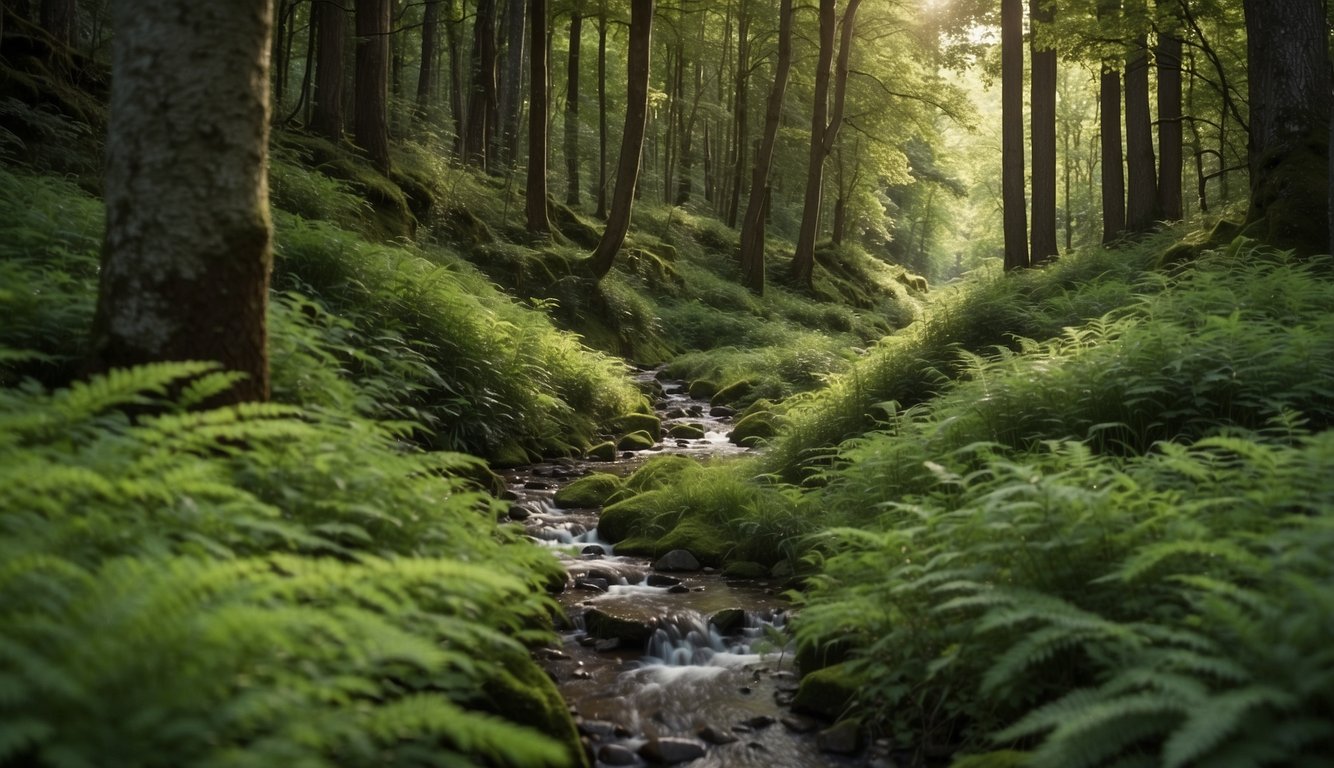As a trail runner and lover of nature, I am constantly seeking ways to balance my passion for running with my desire to preserve the environment. It’s a delicate balance, but one that I believe is achievable with the right mindset and approach.

Trail running provides a unique opportunity to connect with nature in a way that few other activities can. But as the fastest growing outdoor recreation group, it’s important for runners to take responsibility for their impact on the environment. This means being mindful of our actions on the trails, and taking steps to minimize our impact and preserve the natural beauty around us.
In this article, I’ll explore some of the ways that trail runners can balance their love for the sport with their commitment to environmental preservation. From minimizing our carbon footprint to supporting local conservation efforts, there are many ways that we can make a positive impact on the environment while still enjoying the trails we love.
The Impact of Trail Running on the Environment
As a trail runner, I am aware of the potential impact my activities can have on the natural environment. It is important to understand the ways in which trail running can cause harm to the environment and take steps to minimize our footprint. In this section, I will explore some of the environmental impacts of trail running and discuss ways to mitigate these impacts.
Understanding Erosion and Landscape Changes
Increased foot traffic on trails can lead to erosion and damage to vegetation, which can have a significant impact on the natural environment. As a trail runner, it is important to be aware of the impact that our activities can have on the landscape. We can take steps to minimize erosion by staying on designated trails, avoiding shortcuts, and being mindful of our impact on the environment.
Pollution and Waste Management Challenges
Trail runners should also be aware of the potential for pollution and litter. It is important to carry out any waste that we generate on the trail and dispose of it properly. We can also minimize our impact by using reusable water bottles and containers, and by recycling whenever possible.
The Role of Climate Change and Seasonal Considerations
Climate change can also have a significant impact on the natural environment. As trail runners, we should be mindful of the impact that our activities can have on the environment and take steps to mitigate our carbon footprint. Additionally, we should be aware of seasonal considerations such as wildfires and winter weather conditions and take appropriate precautions to minimize our impact.
Overall, it is important for trail runners to be mindful of the impact that our activities can have on the environment. By taking steps to minimize our footprint, we can help to protect the natural environment and promote sustainability for future generations.
Strategies for Sustainable Trail Running
As a trail runner, I am passionate about exploring the outdoors and enjoying the beauty of nature. However, I also understand the importance of preserving our natural resources and promoting environmental sustainability. In this section, I will discuss some strategies for sustainable trail running that can help us balance our love for running with our responsibility to protect the environment.
Promoting Environmental Stewardship Among Runners
As runners, we can play an important role in promoting environmental stewardship and educating others about the importance of preserving our natural resources. We can do this by setting an example and adopting sustainable practices in our daily lives, such as using public transportation, composting, and reducing our carbon footprint.
We can also support organizations that promote environmental sustainability, such as Stewards of the Coast and Redwoods, Runners for Public Lands, and the American Trail Running Association (ATRA). These organizations work to protect public lands, promote sustainable practices in trail running events, and educate runners about the importance of environmental stewardship.
Adopting Sustainable Practices in Trail Running Events
Trail running events can have a significant impact on the environment, from the use of aid stations and cups to the disposal of goodie bags and other waste. As a race director or volunteer, I can adopt sustainable practices to reduce the environmental impact of these events. This can include using compostable cups and utensils, providing recycling bins, and encouraging participants to bring their own water bottles.
I can also support organizations like the Council for Responsible Sport, which provides certification for sustainable sports events and promotes sustainable practices in the sports industry. By adopting these practices, I can help reduce the environmental impact of trail running events and promote environmental sustainability.
Supporting Local Communities and Conservation Efforts
Trail running can also have a positive impact on local communities and conservation efforts. By supporting local businesses and natural places, we can help promote economic development and preserve biodiversity. For example, I can support businesses that promote sustainable practices and use environmentally friendly products.
I can also support conservation efforts by volunteering with organizations like the Nature Conservancy and participating in events like the Dakota Jones Running Camp, which promotes environmental sustainability and stewardship. By supporting these efforts, I can help preserve our natural resources and promote environmental justice.
In conclusion, as a trail runner, I believe that it is important to balance our love for running with our responsibility to protect the environment. By adopting sustainable practices, promoting environmental stewardship, and supporting local communities and conservation efforts, we can help preserve our natural resources and promote environmental sustainability.

